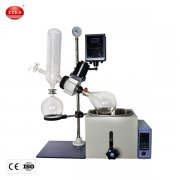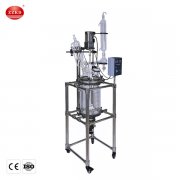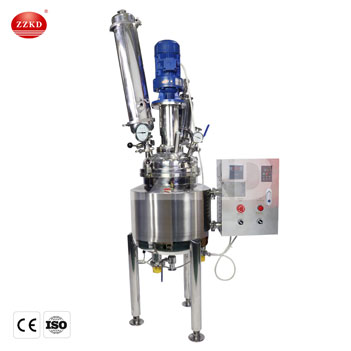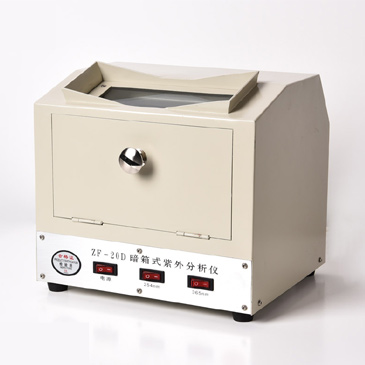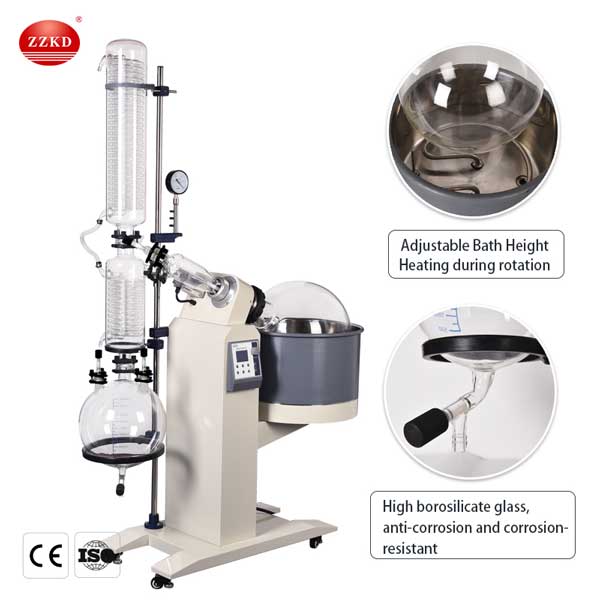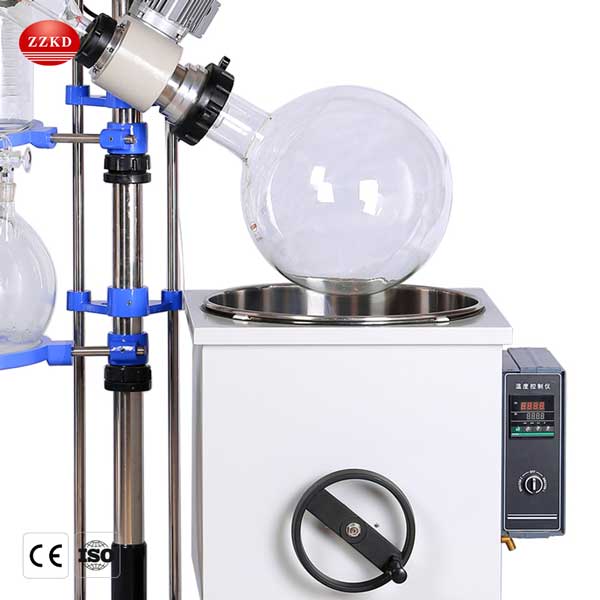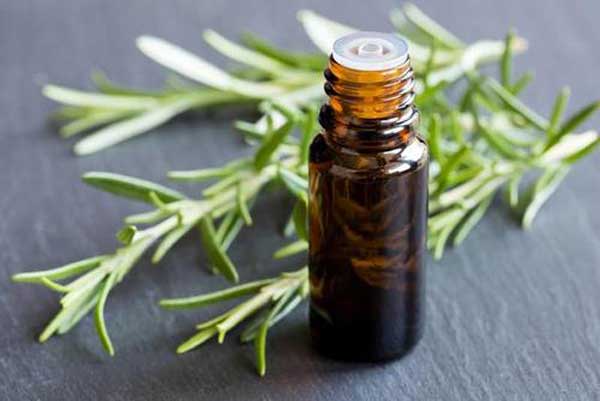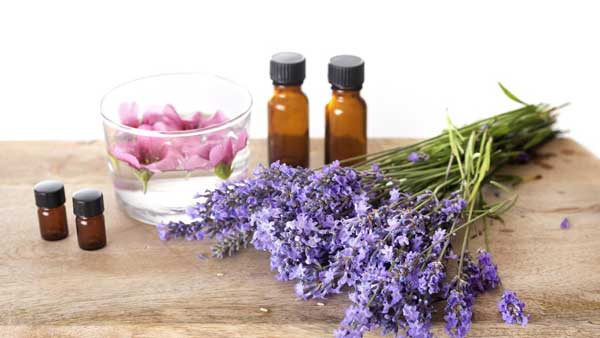The temperature of the heating pot should be 20 degrees higher than the boiling temperature of the solvent evaporation. Note that if a vacuum pump is used, the boiling point under the selected vacuum degree should be referred to. The heating medium is tap water
or distilled water. Due to the heat sensitivity of the target components, it is recommended to use a 50 °C heating bath to avoid burns.
How to use a rotary evaporator for essential oil extraction?
Distillation is the most common extraction method. Below I will introduce several extraction processes. In the whole extraction process, the equipment we mainly use is the rotary evaporator, electric heating constant temperature blast drying oven, low-temperature coolant circulating pump, and circulating water vacuum pump. The equipment used was purchased from ZZKD Laboratory Equipment Co., Ltd.
1. How to extract oil from peppermint plants?
In the process of the extraction process, the equipment that can be used for the extraction process include: the equipment used in the rotary evaporator kit was purchased from ZZKD Laboratory Equipment Co., Ltd.
(1) First, we first washed the mint leaves, placed them in a ventilated place for natural air-drying for 48 hours, and then put them into an electric heating constant temperature blast drying oven for 24 hours at 25°C. drying work.
(2) When the time is up, we take out the dried celery leaves and cut them with scissors. After soaking, they can be put into the rotary evaporator for experiments.
(3) According to the orthogonal experiment method, we take the solid-liquid ratio, soaking time, and distillation time as three elements, and then set three horizontal points from each element to conduct the experiment, and finally get the best conditions for the extraction of celery mint essential oil: The ratio of material to liquid is 1-8, the soaking time is 0.5h, and the distillation time is 3h.
2. How to extract oil from rosemary plants?
Rosemary essential oil extraction process:
There are various extraction techniques for rosemary essential oil, and the short-range molecular distillation technique was adopted in this experiment. The equipment we need to use is a rotary evaporator, a low-temperature coolant circulating pump, and a circulating water vacuum pump. The equipment used was purchased from ZZKD Laboratory Equipment Co., Ltd.
(1) filter the crude rosemary extract to obtain filtrate and filter residue, and reuse the filter residue in the countercurrent extraction process; the filtrate is subjected to falling film evaporation to obtain a concentrated solution with a solid content of 45 to 75%;
(2) The rosemary concentrate is successively dried, cut, and pulverized to obtain crude rosemary powder with a moisture content of less than 4%.
The removal of the rosemary extract is not only beneficial to improve the use performance of the crude rosemary powder but also to reuse and extract the filter residue.
(3) The rosemary slag is extruded and resolubilized, and then dried to obtain a dry material with a moisture content of less than 4%
(4) Continuous countercurrent extraction is performed on the dry material with 80-95% ethanol to obtain a crude extract, and the crude extract is further desolubilized, impurity-removed, and purified to obtain rosemary essential oil.
3. How to extract oil from the lavender plants?
In the whole extraction process, the equipment we need to use is a rotary evaporator, a low-temperature coolant circulating pump and a circulating water vacuum pump. The equipment used was purchased from ZZKD Laboratory Equipment Co., Ltd.
(1) Crushing: Lavender must be dry when crushed, without grass roots and soil sand.
(2) Hair preparation: Add 300kg of water to the rotary evaporator, then add 150kg of lavender in small amounts and several times under stirring, and continue stirring for about 5 minutes when it is charcoal.
(3) Distillation: steam is introduced, and the lavender is mixed with steam and steamed out. After passing through the condenser, it becomes distilled water and flows out together.
(4) Extraction: put 50kg of vegetable oil in the collection extraction tank in advance to obtain 300kg of lavender essential oil distilled water mixture. Extraction makes lavender oil completely dissolved in vegetable oil, generally extracting for 0.5h.
(5) Oil-water separation: After extraction, the oil-water mixture is allowed to stand, the oil and water are layered, and the water is extracted by siphon method or separated by a centrifugal separator, which is the finished product.
All equipment used in the essential oil extraction process in this experiment was purchased from ZZKD Laboratory Equipment Co., Ltd. If you want to know more about the rotary evaporator or order more laboratory equipment, please consult online, ZZKD will serve you sincerely.

 Products
Products





